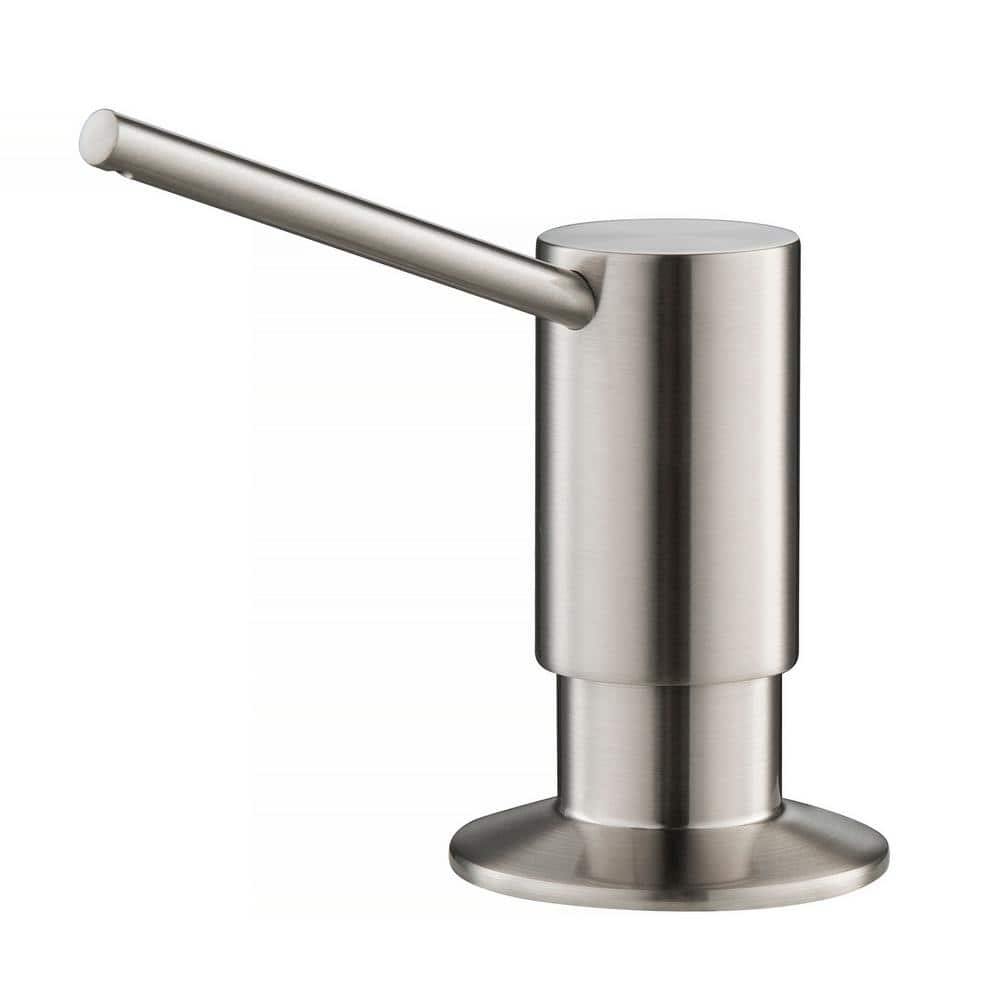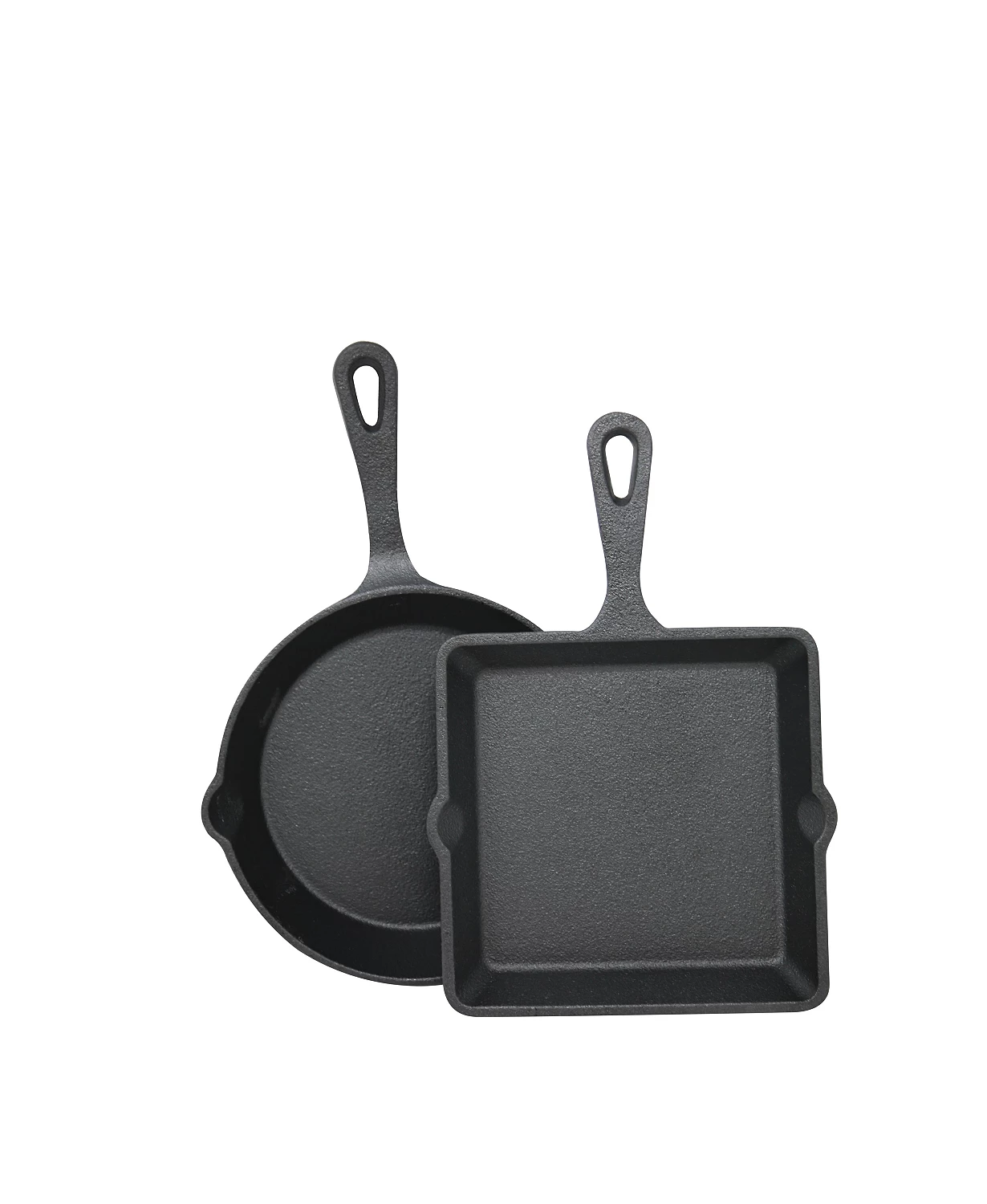KRAUS Kitchen Soap Dispenser KSD41 in Stainless Steel
Constructed from lead-free brass for maximum durability. Corrosion and rust resistant. Holds up to 12 oz. of liquid.
Designed with clean lines and sleek shapes, KRAUS kitchen accessories provide everyday efficiency with style. The clean design of this soap dispenser complements a range of KRAUS kitchen faucets, with a selection of distinctive finishes that coordinate beautifully with most popular kitchen appliances and fixtures. The self-priming pump is constructed from 100% lead-free brass for maximum durability. For added convenience, the pump swivels 360 and is refillable from above. Experience KRAUS Quality, down to the details.
- Brass pump for long-lasting functionality
- Superior finish: resistant to corrosion and rust
- Coordinates with a range of kitchen faucet designs
- Self-priming pump for flawless functionality
- Refillable from above counter for your convenience
- Lifetime limited warranty: experience KRAUS quality
- Limited lifetime warranty
- Overall height: 11.9 in.
- Diameter: 2.2 in.
- Spout height: 3.3 in.
- Spout reach: 3.4 in.
Additional information
| Dimensions | H 11.9, W 2.2 in, D 2.2 |
|---|---|
| Manufacturer Warranty | Limited Lifetime |
The term dispenser typically imply a machine or container which is designed to release a specific amount of its content, usually liquids or powders/fine granular materials.
In common usage, a dispenser may also refer to:
A kitchen is a room or part of a room used for cooking and food preparation in a dwelling or in a commercial establishment. A modern middle-class residential kitchen is typically equipped with a stove, a sink with hot and cold running water, a refrigerator, and worktops and kitchen cabinets arranged according to a modular design. Many households have a microwave oven, a dishwasher, and other electric appliances. The main functions of a kitchen are to store, prepare and cook food (and to complete related tasks such as dishwashing). The room or area may also be used for dining (or small meals such as breakfast), entertaining and laundry. The design and construction of kitchens is a huge market all over the world.
Commercial kitchens are found in restaurants, cafeterias, hotels, hospitals, educational and workplace facilities, army barracks, and similar establishments. These kitchens are generally larger and equipped with bigger and more heavy-duty equipment than a residential kitchen. For example, a large restaurant may have a huge walk-in refrigerator and a large commercial dishwasher machine. In some instances, commercial kitchen equipment such as commercial sinks is used in household settings as it offers ease of use for food preparation and high durability.
In developed countries, commercial kitchens are generally subject to public health laws. They are inspected periodically by public-health officials, and forced to close if they do not meet hygienic requirements mandated by law.
Soap is a salt of a fatty acid (sometimes other carboxylic acids) used for cleaning and lubricating products as well as other applications. In a domestic setting, soaps, specifically "toilet soaps", are surfactants usually used for washing, bathing, and other types of housekeeping. In industrial settings, soaps are used as thickeners, components of some lubricants, emulsifiers, and catalysts.
Soaps are often produced by mixing fats and oils with a base. Humans have used soap for millennia; evidence exists for the production of soap-like materials in ancient Babylon around 2800 BC.
Stainless may refer to:
- Cleanliness, or the quality of being clean
- Stainless steel, a corrosion-resistant metal alloy
- Stainless Games, a British video game developer
- Stainless Broadcasting Company, a TV broadcaster based in Michigan, US
- Stainless Banner, the second national flag of the Confederate States of America
Steel is an alloy of iron and carbon with improved strength and fracture resistance compared to other forms of iron. Because of its high tensile strength and low cost, steel is one of the most commonly manufactured materials in the world. Steel is used in buildings, as concrete reinforcing rods, in bridges, infrastructure, tools, ships, trains, cars, bicycles, machines, electrical appliances, furniture, and weapons.
Iron is always the main element in steel, but many other elements may be present or added. Stainless steels, which are resistant to corrosion and oxidation, typically need an additional 11% chromium.
Iron is the base metal of steel. Depending on the temperature, it can take two crystalline forms (allotropic forms): body-centred cubic and face-centred cubic. The interaction of the allotropes of iron with the alloying elements, primarily carbon, gives steel and cast iron their range of unique properties. In pure iron, the crystal structure has relatively little resistance to the iron atoms slipping past one another, and so pure iron is quite ductile, or soft and easily formed. In steel, small amounts of carbon, other elements, and inclusions within the iron act as hardening agents that prevent the movement of dislocations.
The carbon in typical steel alloys may contribute up to 2.14% of its weight. Varying the amount of carbon and many other alloying elements, as well as controlling their chemical and physical makeup in the final steel (either as solute elements, or as precipitated phases), impedes the movement of the dislocations that make pure iron ductile, and thus controls and enhances its qualities. These qualities include the hardness, quenching behaviour, need for annealing, tempering behaviour, yield strength, and tensile strength of the resulting steel. The increase in steel's strength compared to pure iron is possible only by reducing iron's ductility.
Steel was produced in bloomery furnaces for thousands of years, but its large-scale, industrial use began only after more efficient production methods were devised in the 17th century, with the introduction of the blast furnace and production of crucible steel. This was followed by the Bessemer process in England in the mid-19th century, and then by the open-hearth furnace. With the invention of the Bessemer process, a new era of mass-produced steel began. Mild steel replaced wrought iron. The German states were the major steel producers in Europe in the 19th century. American steel production was centred in Pittsburgh, Bethlehem, Pennsylvania, and Cleveland until the late 20th century. Currently, world steel production is centered in China, which produced 54% of the world's steel in 2023.
Further refinements in the process, such as basic oxygen steelmaking (BOS), largely replaced earlier methods by further lowering the cost of production and increasing the quality of the final product. Today more than 1.6 billion tons of steel is produced annually. Modern steel is generally identified by various grades defined by assorted standards organizations. The modern steel industry is one of the largest manufacturing industries in the world, but also one of the most energy and greenhouse gas emission intense industries, contributing 8% of global emissions. However, steel is also very reusable: it is one of the world's most-recycled materials, with a recycling rate of over 60% globally.






by Edgar
Very convenient addition to a sink with a spray nozzle now incorporated in the faucet.
by Ken
Easy to install and works well.
by Allen
Installation should have been easier, but the ring would not completely meet the bottom of sink. Filling is a bit of a challenge.
by Robin
Attractive works well would buy again.
by Indira
Nice quality product. Strong spring tension, refillable from the top, stain resistant, aesthetically pleasing. Just what I needed since the sink and faucet combo I purchased did not come with a soap dispenser.